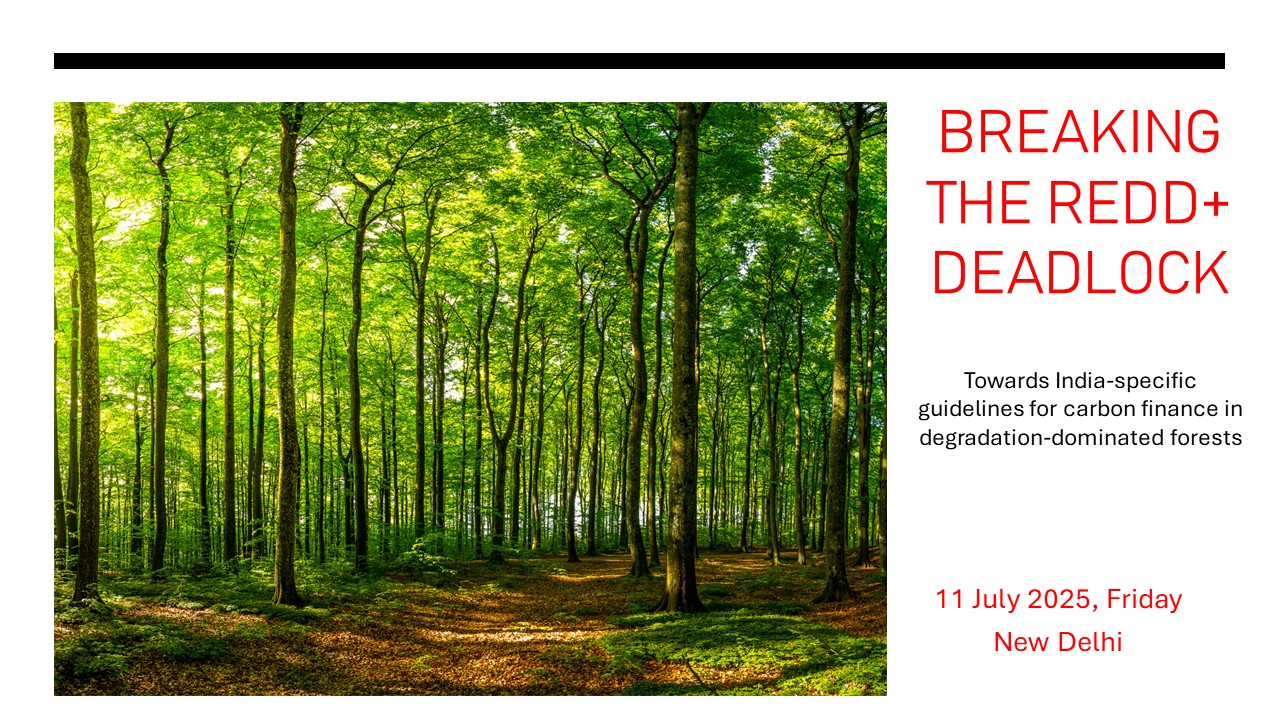Breaking the REDD + Deadlock: Towards India-Specific Guidelines for Carbon Finance in Degradation-Dominated Forests

India’s forest landscapes are highly diverse, spanning tropical rainforests, dry deciduous zones, and alpine ecosystems. Unlike many countries where deforestation is the primary concern, forest degradation due to overgrazing, firewood extraction, invasive species, and unsustainable tourism is more prevalent across India’s forest cover.
India is actively pursuing REDD and REDD+strategies. However, the existing international carbon credit methodologies - such as those under Verra, Plan Vivo, and other voluntary standards - are often modeled on deforestation-dominated geographies. These standards currently do not fully recognize India’s degradation-centric scenario, government-managed forest ownership, or community-based forest governance models like JFMCs and EDCs.
TERI is working on REDD based carbon finance projects across India. However, many of these remain stalled due to lack of contextual alignment in standard requirements. Thus, there is an urgent need to break the deadlock by evolving India-specific operational guidelines within the existing frameworks to unlock the immense carbon finance potential from India’s degraded forests.
Objectives
- To deliberate on the key barriers faced by REDD projects in India under current global carbon credit standards.
- To propose context-specific modifications or flexibilities in carbon methodologies, especially related to Activity Data, Land Tenure and Quantification of Degradation.
- To explore ways for integrating community-based forest management into voluntary carbon frameworks like Verra, Plan Vivo, and others.
- To provide a platform for knowledge exchange among stakeholders to develop a working roadmap toward India-compatible REDD implementation.
